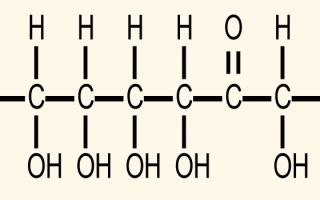Carbohydrates are the category of simple and complex sugars that are part of all tissues of the human and animal body.
Role in metabolism
Carbohydrates provide energy to the body. They account for about 60% of the calorie content of a person's daily diet. These substances do not accumulate, so it is necessary to constantly include them in the diet. Carbohydrates enter the body as starch, glycogen, sucrose, lactose, fructose and glucose.
The breakdown begins in the oral cavity under the influence of salivary enzymes, so it is important to chew foods containing them especially carefully. Sugar, like other carbohydrates, such as starch (found in bread and cereals), is converted into monosaccharides, primarily glucose, and enters the blood.
But the sugar in starch takes longer to break down and enters the blood gradually over a long time, which is why they are called “long” carbohydrates. Fructose and sugar are quickly broken down and enter the blood instantly, which significantly increases their level in the blood and puts a strain on the pancreas. This results in the release of large amounts of insulin. Insulin triggers many processes that convert sugar into fat, and in some cases, cholesterol.
All carbohydrates are high in calories; when 1 g is broken down, 4.0-4.2 kcal are released. Therefore, at their expense it is easiest to regulate the calorie content of the daily diet.
The body's need for carbohydrates largely depends on the body's energy expenditure.
On average, the body should receive from 300 to 500 g of carbohydrates per day, which corresponds to approximately 80-100 g of sugar. With heavy physical exertion, this amount should be increased.
Sources of carbohydrates
There are three main sources:
- cereals and products made from them;
- cereals;
- milk;
- sugar;
- fruits and some vegetables.
Recently, there has been an increase in the number of people who do not tolerate gluten, which is found in grains, and lactose, which is found in milk.
Read more about gluten intolerance in the article “ Celiac Disease ”,
about lactase intolerance here .
The following products are considered the main source of carbohydrates (g/100 g of product):
- rye bread 42-45,
- wheat bread 43-50,
- buckwheat 64,
- semolina 70,
- rice 72,
- sugar 95-99,
- potatoes 20,
- white cabbage 5,
- carrots 7-8,
- beets 10,
- grapes 17,
- apple 11.
Honey, depending on its origin, contains 70-80% mono- and disaccharides. Its sweet taste is given by fructose, the sweet properties of which are 2.5 times higher than glucose and 1.5 times higher than sucrose.
Functions
Although carbohydrates are described in the literature primarily as a source of energy, their functions are very diverse:
- energy (glucose, glycogen);
- structural (chondroitin sulfates, hyaluronic and other heteropolysaccharides);
- synthesis of immune bodies in response to antigens (galactose);
- hemostatic (blood clotting: F.I, II, VIII, IX, X, XI);
- anticoagulant (heparin);
- homeostatic (maintaining homeostasis (balance), for example, water-electrolyte metabolism, blood glucose levels);
- supporting (bones, cartilage, chondroinsults);
- mechanical (as part of connective tissue);
- group-specific substances of red blood cells;
- pressure regulator (osmoregular) - glucose;
- neutralizing (paired glucuronic acids);
- antilipidemic (heparin);
- creation of antigenicity (specific polysaccharides);
- creation of mechanical protection - joints, mucous membranes;
- creation of the material basis of heredity (DNA, RNA molecules);
- participation in the structure of energy accumulators (ATP, UTP, GHF, CTF);
- creating food volume, ensuring intestinal motility and moving food through the gastrointestinal tract.







